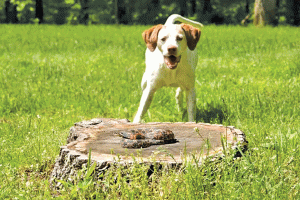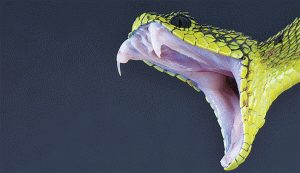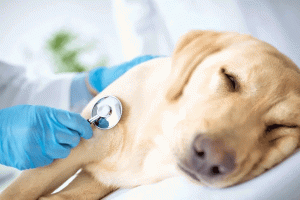 There was a time whenever I heard “snake bites” as a cause of death, especially among domestic livestock, I used to laugh and deem it an embarrassing diagnosis. In other words, whenever the herdsman or the ranch manager was not sure of the cause of death, the easiest thing to blame was poison from snake bites. I still believe that many of the deaths attributed to snake venom might not reflect a genuine reality.
There was a time whenever I heard “snake bites” as a cause of death, especially among domestic livestock, I used to laugh and deem it an embarrassing diagnosis. In other words, whenever the herdsman or the ranch manager was not sure of the cause of death, the easiest thing to blame was poison from snake bites. I still believe that many of the deaths attributed to snake venom might not reflect a genuine reality.
Snake bites in dogs are a different matter. Although many dogs are smart enough just to bark at (but keep their distance from) snakes, too many wish to effect a confrontation — and they most assuredly will come out second best, if the snake is poisonous.
Actually, most snakes are non-venomous; so, you do not have to worry too much just because your dog has been bitten by a snake. My smart textbook tells me that bites of harmless snakes show teeth marks in the shape of a horseshoe, while the bites of poisonous snakes, which have fangs, exhibit holes in the skin. Well, I have seen enough dogs in my decades of practice that show all the signs of being afflicted with snake venom, yet it is so difficult to find the fang wounds. What I am really saying is that you should look for other symptoms and not only rely on fang marks. Of course, if you actually see the snake and better yet, photograph it to show to your vet, it will help in the ultimate diagnosis.
SYMPTOMS
Some minimal tissue reaction (lesions/wounds) in the area of the mouth of dogs and the paws of cats
Vomiting shortly after the snake bite
Depression
Hypothermia (lower than normal body temperature)
Increased vomiting and vocalization (especially in cats) and signs of anxiety
Changes in the breathing rhythm (short, shallow respiratory movements) — leading to the cessation of breathing altogether
Muscle tremors (trembling) are often exhibited in dogs, lesser so in cats
Discoloration of the urine (blood in urine)
TREATMENT OF SNAKE BITES
First, identify the snake and look at the bite marks (see below). If it appears your dog is bitten by a poisonous snake, proceed as follows:
Restrain the dog. Snake bites are extremely painful; the dog might want to bite you.
Apply a flat tourniquet above the bite. It should not be as tight as an arterial tourniquet, but be tight enough to keep venous blood from returning to the heart.
Using a knife or razor blade to make parallel cuts 1/4’’ deep through the fang marks. If the bite marks are on a leg, make the cuts up and down. Blood should ooze from the wound. If not, loosen the tourniquet.
There is a lot of debate as to whether one should apply mouth suction to the wound. First of all, it is unaesthetic and, secondly, many people fear getting poisoned themselves. Well, this latter consideration is most unlikely, although I would not suggest that you use mouth suction if you have a cut or an open sore in your own mouth.
Suck and spit and wash your mouth immediately. Repeat this as often as necessary, at least six times, over 30 minutes. If snake venom is swallowed, the stomach will inactivate it.
Loosen the tourniquet for 30 seconds every half hour.
Keep the dog quiet. Excitement, exercise, struggling, increase the rate of absorption. Carry him to your veterinarian.
Specific antivenoms are available through veterinarians, who might have antivenom in stock. The vet may be able to seek antivenom from the Georgetown Public Hospital Inc.
Sometimes, snake bites become infected. Antibiotics and dressings would then be indicated.
The post EMERGENCIES (continued): POISONING VIA SNAKE BITES (SNAKE ENVENOMATION) appeared first on Guyana Times.